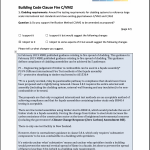
In the face of literally decades of research and millions of homes built and studied, the builders and developers here in NZ are somehow still convincing financiers, designers, and regulators that buildings need to “breathe” to stay dry. And before you say, “well obviously buildings need ventilation, Pete,” let me clarify. When they say “breathe” they don’t mean with mechanical lungs (i.e. a ventilation system), they ACTUALLY mean through punctures in the rib cage (i.e. a leaky, non-airtight enclosure). By saying that this how things have always been done here (even though many of the buildings are rotting and moulding from the inside out), they are convincing people that the laws of physics here in NZ are somehow different than in the rest of the world. To make as much profit as possible by spending the absolute bare minimum on constructing properly, they are somehow convincing people that drafts through walls and windows is a good thing, that kitchens and bathrooms have no need for a fan that vents moisture outside, and that heating (like, literally any heaters at all) in a home should be the tenant’s responsibility. Even though the construction industry magically works all around the world, they are still able to scream loud enough to convince regulators that putting a minimum requirement for heating and ventilation in the building code will either inexplicably collapse the entire economy of the country, or that things work differently here and these basic, no-brainer items are unnecessary. The mantra “build tight, ventilate right” works everywhere else in the world, but somehow people are able to be convinced that it won’t work here.
So in response, I submit evidence that the build tight ventilate right approach can work literally anywhere:
Have you ever wondered how the International Space Station keeps people alive and at a comfortable temperature? It needs to be 100.00% airtight, and because there’s no gravity in space, ventilation is absolutely mandatory because heat and air doesn’t naturally circulate due to convection. Air needs to be constantly flowing through the interior to make sure equipment and people don’t overheat due to hot spots staying in one place, to prevent asphyxiation due to localized oxygen or CO2 buildups, and to prevent mould growth and/or electrical problems due to water build up (because it collects in floating bubbles without gravity). The moisture in the air is collected and recycled into water for use again! On the ISS, while the interior needs to stay dry and at the perfect temperature, the exterior varies from -250°C to +250°C on either side of the space craft because in the vacuum of space, there is no air to provide insulation or moderation of temperature through convection. Radiation is the only method of heat transfer, so a material is 100% hot in the sun and 100% cold in the shade.
So, even though the void of space is technically cold, since the station is so well insulated from the radiation of sun and the earth, all of that ventilated air needs to be cooled and the heat generated by the humans and machinery inside needs to be discharged to the outside. On earth, the way to do that would be through a heat sink or radiator with tons of surface area (fins or coils) to allow air to pass through and collect and remove that heat. But because there’s no air in space, a different mechanism is necessary. They need gigantic panels to allow heat energy to dissipate in the form of infrared light radiation. Wild, right? On the ISS, these panels look kind of like white zigzag solar panels that are oriented orthogonally to the sun for maximum efficiency instead of directly at it like the photovoltaics. In the case of the space shuttle, these radiator panels were located on the inside of the cargo bay doors, which is why the doors always had to be open during orbit. WILD, RIGHT?
If you want to read more about it from the horse’s mouth (NASA), you can follow the link: https://science.nasa.gov/science-news/science-at-nasa/2001/ast21mar_1
And if you want to see a cool video of the Space Shuttle Endeavour’s last spaceflight where they did a circle around the ISS, check it out: https://www.dailymotion.com/video/xrvra9
All that being said, obviously the “build tight, ventilate right” method works, and it works EVERYWHERE. You just need to consider all of the variables and design it properly. Anyone who tries to convince you otherwise is trying to save money in capital cost at the expense of the health of the occupants and maintenance/repairs down the road.





